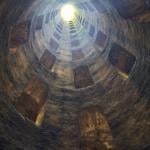Robert Pogue Harrison glances at his father’s college yearbook and finds that “twelve-year-old boys looked like little adults, their faces furrowed by the depths of time” (Juvenescence, x). We’re younger now: “the first-world face of today remains callow, even as it withers away with age, never attaining the strong senile traits of the elderly of other culture or historical eras. The difference lies not merely in our enhanced diets, health benefits, and reduced exposure to the elements but in a... Read more














